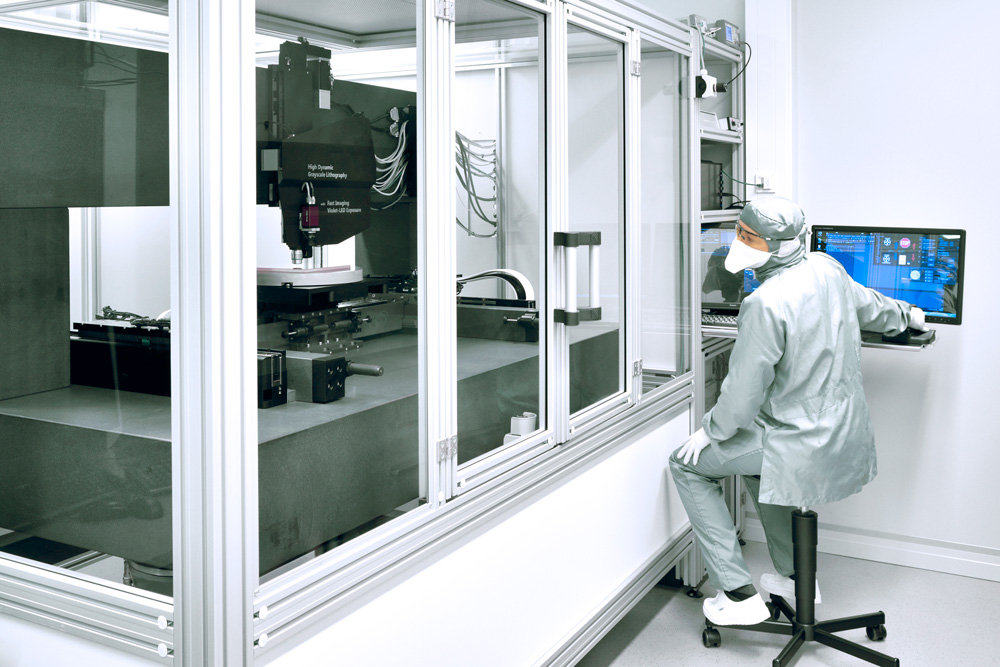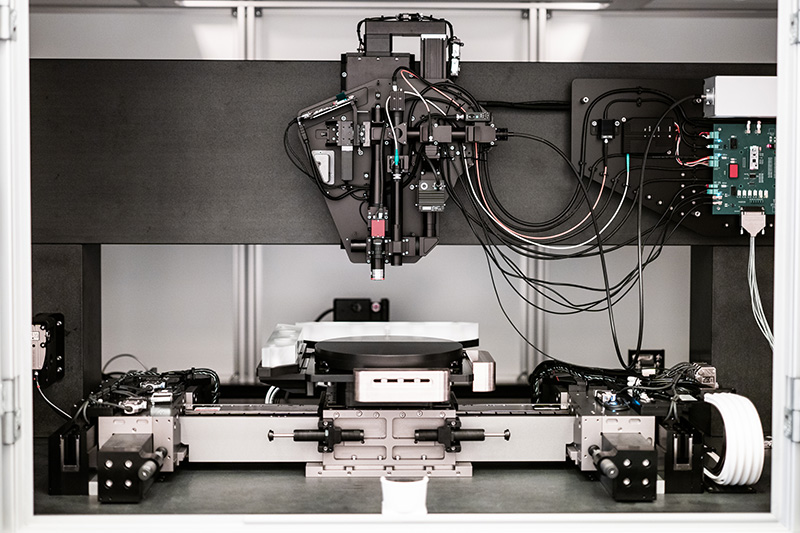The faster and easier production of free-form micro-optics in larger quantities - that is the goal of "HighFive", a series of highly dynamic grayscale lithography systems. In close cooperation with industry, the next generation system "HighFive-C" was developed at Fraunhofer IOF.
"HighFive" allows the mass production of micro-optical, microfluidic as well as micromechanical components and integrated structures and realizes a dynamic workflow. For this purpose, the system combines grayscale lithography with a digital photomask and a nanometer-precise positioning system.
Among other applications, the components produced with the "HighFive" system are used in special lighting systems for the automotive industry, in lightweight sensor systems, in customized room lighting units, as well as in "lab on a chip" systems or in integrated miniaturized optical systems such as virtual reality (VR) or augmented reality (AR) glasses.


